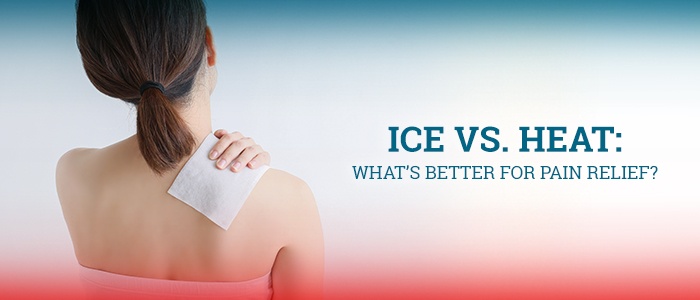
Slight to moderate pain doesn't always require a trip to the doctor's office. In certain situations, using a cold pack or heating pad at home can help you feel better, faster. The trick is finding the right treatment for your needs - and knowing how to use that treatment without causing yourself further pain or injury.
Ready for some cool tips and hot advice? Read on for the basic on using ice and heat for pain relief.
If you're treating pain at home, simply remember this quick rule of thumb: Ice is for numbing the inflammation associated with fresh injuries (like if you fall and hurt your knee or ankle) - and heat is for soothing stiff, aching muscles and joints.
Let's take a quick look at when to use both:
When to use cold therapy
- If you have had a recent injury (within the last 48 hours) where swelling is a problem.
- Apply an ice pack, frozen gel pack or even a bag of frozen vegetables wrapped in a towel to the affected area. You should never apply a frozen item directly to the skin, as it can cause damage to the skin and tissues.
- Apply cold treatment as soon as possible after an injury.
- Use cold therapy for short periods of time, several times a day. Ten to 15 minutes is fine, and no more than 20 minutes of cold therapy should be used at a time to prevent nerve, tissue, and skin damage.
- Elevate the affected area for best results.
When to use heat therapy
- If you are experiencing joint or muscle pain or stiffness.
- Minor stiffness or tension can often be relieved with only 15 to 20 minutes of heat therapy.
- Moderate to severe pain can benefit from longer sessions of heat therapy like warm bath, lasting between 30 minutes and two hours.
- Local therapy is best for small areas of pain, like one stiff muscle. You could use small heated gel packs or a hot water bottle if you only want to treat an injury locally.
- Regional treatment is best for more widespread pain or stiffness, and could be achieved with a steamed towel, large heating pad, or heat wraps.
- Full body treatment would include options like saunas or a hot bath.
When NOT to use cold or heat packs:
- If you have areas of skin with open wounds or rashes.
- If you have areas of skin with poor sensation to heat or cold.
- If you have areas of the body with known poor circulation.
- If you have diabetes.
- If you have an infection under your skin.
If the treatment hasn’t helped much with regular use, or makes your pain worse, see your doctor to discuss other treatment options. It’s also important to call your doctor if you develop any bruising or skin changes while using cold or heat therapy.


